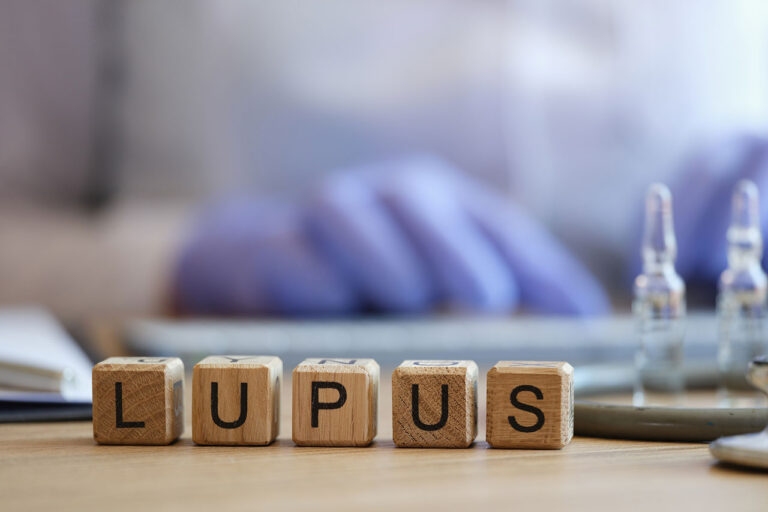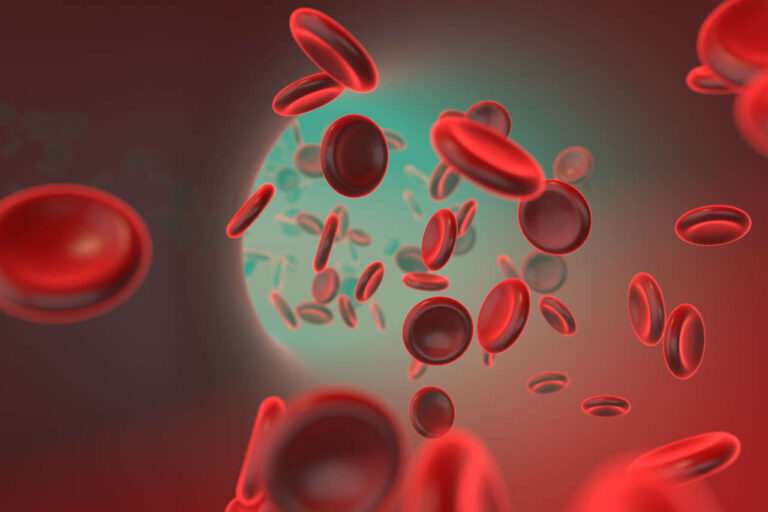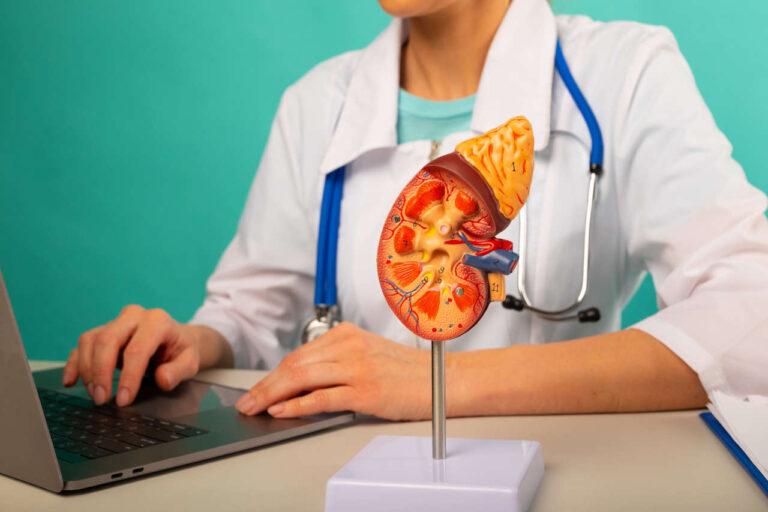
IVIG (globulin miễn dịch tiêm tĩnh mạch) là phương pháp điều trị chính cho bệnh xuất huyết sau truyền máu. Thuốc giúp tăng số lượng tiểu cầu và cầm máu. Tìm hiểu về cơ chế tác dụng, liều dùng và hiệu quả của thuốc.
Nhận hỗ trợ tài chính
Điểm nổi bật
- Ban xuất huyết sau truyền máu (PTP) là một phản ứng truyền máu hiếm gặp nhưng có khả năng gây tử vong.
- PTP thường tự giới hạn và khỏi trong vòng 14 ngày.
- Chảy máu nghiêm trọng xảy ra ở khoảng 33% bệnh nhân.
- IVIG liều cao là phương pháp điều trị chính có tỷ lệ đáp ứng cao.
Tổng quan nhanh về bệnh xuất huyết sau truyền máu
Ban xuất huyết sau truyền máu (PTP) là một phản ứng truyền máu hiếm gặp nhưng có khả năng gây tử vong. Các nhà nghiên cứu vẫn chưa xác định được tỷ lệ mắc chính xác của tình trạng này. Tuy nhiên, các nghiên cứu ước tính có khoảng 1 trường hợp PTP mới trên 24.000 đến 100.000 ca truyền máu [1].
Đặc điểm đặc trưng của PTP là số lượng tiểu cầu giảm đột ngột, mạnh, thường xảy ra trong vòng 14 ngày sau khi truyền máu hoặc tiểu cầu. Số lượng tiểu cầu thấp sau khi truyền máu thường tự giới hạn, thường hồi phục trong vòng 2 tuần.
Tuy nhiên, trong những trường hợp nghiêm trọng, tử vong có thể xảy ra do chảy máu bên trong hộp sọ hoặc não. Cứ 3 bệnh nhân thì có khoảng 1 người bị chảy máu nghiêm trọng.

Các triệu chứng có thể bao gồm:
- Sốt sau truyền máu
- Phát ban xuất huyết bất thường (các đốm đỏ hoặc tím dưới da)
- Bầm tím
- Chảy máu mũi
- Chảy máu nướu răng
- Chảy máu ở đường tiêu hóa và đường tiết niệu
Nguyên nhân gây ra bệnh xuất huyết sau truyền máu là gì?
PTP có thể xảy ra khi các kháng thể (protein) chống lại tiểu cầu được truyền vào tấn công và phá hủy tiểu cầu của người nhận. Tuy nhiên, nguyên nhân của hiện tượng này vẫn chưa rõ ràng.
Các yếu tố sau đây có thể làm tăng nguy cơ mắc PTP [2,3]:
- Là nữ: Tỷ lệ nữ/nam trong PTP là 5:1.
- Có tiền sử mang thai hoặc truyền máu.
- Người cao tuổi, có tiền sử rối loạn nhịp tim, rối loạn chảy máu, ung thư máu hoặc tủy xương và ghép tạng.
- Có khối lượng máu truyền cao hơn.
- Bị thiếu máu (số lượng hồng cầu thấp) do mất máu đột ngột, chẳng hạn như do chấn thương.
Điều trị sau truyền máu
IVIG là phương pháp điều trị chính cho ban xuất huyết sau truyền máu. Có thể cân nhắc thay huyết tương (lọc huyết tương) và corticosteroid ở những người không đáp ứng với IVIG. Steroid cũng có thể được sử dụng kết hợp với IVIG.
Hầu hết các chuyên gia không khuyến nghị truyền tiểu cầu vì điều này có thể làm cho các triệu chứng trở nên tồi tệ hơn.
Đọc thêm: IVIG so với lọc huyết tương
Nói chuyện với một chuyên gia
Về Trợ cấp đồng thanh toánIVIG điều trị bệnh xuất huyết sau truyền máu: Các nghiên cứu gần đây cho thấy điều gì?
Phần lớn kiến thức về IVIG trong điều trị xuất huyết sau truyền máu đến từ các báo cáo ca bệnh và các nghiên cứu nhỏ. Tuy nhiên, IVIG thường được coi là phương pháp điều trị lựa chọn cho PTP.
IVIG có hiệu quả cao, với tỷ lệ đáp ứng được báo cáo là 90% và đáp ứng thuận lợi trong vòng 48 giờ sau khi bắt đầu điều trị IVIG.
Nhiều nghiên cứu và báo cáo ca bệnh đã phát hiện ra rằng IVIG liều cao có hiệu quả trong:
- Số lượng tiểu cầu tăng nhanh
- Cầm máu
Ví dụ, theo báo cáo trường hợp năm 2025 được công bố trên Tạp chí Hiệp hội Y khoa Canada, các nhà nghiên cứu đã điều trị thành công cho một phụ nữ 36 tuổi bị nghi mắc PTP bằng IVIG và steroid.
Bệnh nhân được truyền IVIG 1 g/kg/ngày trong 4 ngày, từ ngày 10 đến ngày 13. Cô cũng được truyền dexamethasone 40 mg/ngày từ ngày 11 đến ngày 14. Số lượng tiểu cầu của cô tăng lên khoảng 72 giờ sau khi bắt đầu điều trị IVIG [4].
Theo các tác giả của một bài đánh giá năm 2019, IVIG là phương pháp điều trị chính cho PTP. Trong bài đánh giá này, có hai phác đồ liều dùng [5]:
- 400 mg đến 500 mg/kg/ngày IVIG trong 1 đến 10 ngày.
- 1 đến 2 g/kg/ngày IVIG trong 2 đến 5 ngày.
Theo báo cáo trường hợp năm 2024 được công bố trên Tạp chí Báo cáo Trường hợp Hoa Kỳ, một người đàn ông 69 tuổi mắc PTP đã được điều trị thành công bằng liều IVIG 1 g/kg mỗi ngày trong 2 ngày và liều steroid (dexamethasone) 40 mg/ngày trong 4 ngày [6].
IVIG điều trị bệnh xuất huyết sau truyền máu: Liệu pháp IVIG có tác dụng như thế nào?
Cơ chế chính xác mà IVIG làm tăng số lượng tiểu cầu trong bệnh xuất huyết sau truyền máu vẫn chưa rõ ràng.
Các lý thuyết hiện có dựa trên vai trò của IVIG trong ban xuất huyết giảm tiểu cầu miễn dịchCác chuyên gia y tế tin rằng IVIG có thể giúp phục hồi số lượng tiểu cầu bằng cách:
- Ngăn chặn việc loại bỏ tiểu cầu có kháng thể.
- Kháng thể trung hòa tấn công tiểu cầu của người nhận.
- Ngăn chặn các tế bào miễn dịch phá hủy tiểu cầu của người nhận.
- Tăng tốc độ phân hủy kháng thể.
IVIG cho bệnh xuất huyết sau truyền máu: Những câu hỏi thường gặp
1. Bệnh xuất huyết sau truyền máu được điều trị như thế nào?
IVIG liều cao là phương pháp điều trị đầu tay cho ban xuất huyết sau truyền máu. Nếu các triệu chứng không cải thiện, bác sĩ có thể đề nghị thay huyết tương hoặc corticosteroid. Truyền tiểu cầu hiếm khi được sử dụng và nên dành cho những bệnh nhân bị chảy máu nghiêm trọng.
2. IVIG giúp ích như thế nào trong điều trị giảm tiểu cầu?
Cơ chế chính xác vẫn chưa được hiểu rõ hoàn toàn. Người ta tin rằng IVIG giúp phục hồi số lượng tiểu cầu bằng cách ngăn cơ thể loại bỏ tiểu cầu có kháng thể và kháng thể trung hòa.
3. IVIG làm tăng tiểu cầu nhanh như thế nào?
IVIG thường làm tăng số lượng tiểu cầu trong vòng 48 đến 72 giờ sau khi bắt đầu điều trị. Thời gian để tăng số lượng tiểu cầu phụ thuộc vào nồng độ tiểu cầu của bệnh nhân tại thời điểm bắt đầu IVIG, mức độ nghiêm trọng của bệnh và liều IVIG được sử dụng.
TÀI LIỆU THAM KHẢO:
- Owczarzak, Laura, và cộng sự. “Biểu hiện hiếm gặp của ban xuất huyết sau truyền máu ở nam giới cao tuổi: Báo cáo ca bệnh và xác định kháng thể dị loại độc đáo.” Tạp chí Báo cáo ca bệnh Hoa Kỳ, tập 25, tháng 6 năm 2024, doi:10.12659/ajcr.942949.
- Desai, Nosha Farhadfar Amishi, và cộng sự. “Chẩn đoán và xử trí ban xuất huyết sau truyền máu: Báo cáo ca bệnh.” Tạp chí Báo cáo ca bệnh lâm sàng, tập 05, số 06, tháng 1 năm 2015, doi:10.4172/2165-7920.1000550.
- Menis, Mikhail, và cộng sự. “Xuất hiện ban xuất huyết sau truyền máu và các yếu tố nguy cơ tiềm ẩn ở bệnh nhân cao tuổi nội trú tại Hoa Kỳ, được ghi nhận trong cơ sở dữ liệu Medicare lớn từ năm 2011 đến năm 2012.” Truyền máu, tập 55, số 2, tháng 7 năm 2014, trang 284–95, doi:10.1111/trf.12782.
- Hirunwidchayarat, Panumase, và cộng sự. “Ban xuất huyết sau truyền máu ở một phụ nữ 36 tuổi.” Tạp chí Hiệp hội Y khoa Canada, tập 197, số 23, tháng 6 năm 2025, trang E640–44, doi:10.1503/cmaj.250206.
- Hawkins, Jaleah và cộng sự. “Bệnh xuất huyết sau truyền máu: Quan điểm hiện tại.” Tạp chí Y học Máu, tập 10, trang 405-415. Ngày 9 tháng 12 năm 2019, doi:10.2147/JBM.S189176
- “Biểu hiện hiếm gặp của ban xuất huyết sau truyền máu ở nam giới lớn tuổi: Báo cáo ca bệnh và xác định kháng thể dị loại độc đáo.” Tạp chí báo cáo ca bệnh Hoa Kỳ, tập 25, tháng 6 năm 2024, doi:10.12659/ajcr.942949.












